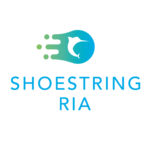

Setting Up Your Legal Structure
November 16, 2021 | RIA Resources

In our previous article, we explained the differences between C-Corps, S-Corps, and LLCs as part of your initial decision-making process. As mentioned, setting up your legal structure is crucial to a successful start. There’s a lot of work to be done in this step. This article aims to make things a bit easier and will advise you on setting up business bank accounts, getting legal help, taking the proper exams, and planning a manageable and realistic timeline to establish your new RIA.
Setting Up Your Business Accounts
With your business official with the secretary of state, you’ll want to next apply for an Employer Identification Number (EIN) with the IRS. This is a simple process that can be done online in a matter of minutes, and the IRS provides you with your EIN immediately after your application.
With your EIN in hand, you can now apply for bank accounts and credit cards. Start with a basic business checking account with no fees or minimum balance requirements for bank accounts. You can always upgrade to a higher yield checking account later (with minimum balance requirements). Applying for business credit cards is another good idea, especially if you think you may need to “float” some expenses early on to make ends meet.
While business banking accounts don’t require a personal guarantee, business credit cards for new businesses will — so your chances of approval depend on your credit score. It may be a good idea to check your credit before applying for any business credit cards to give you higher chances of approval. This is especially true for the top-tier business credit cards like American Express and others — which typically look for credit scores well above 700.
Another important decision is on accounting software, which you’ll need to track these accounts. While there are many options out there, we recommend new RIAs use QuickBooks. Not only is it the most widely used accounting software, but it offers a web-based version that is relatively simple to use and much cheaper than desktop software.
Getting Legal Help
With your business structure and accounts in place, move on to the regulatory requirements. You could do this yourself. However, a compliance lawyer should handle most of this part of the process, as any mistakes or omissions could lead to costly delays or rejections.
While your compliance lawyer works on your documents, study for and take the FINRA Series 65 exam. The exam currently costs $187 and is available online, and consists of 130 scored questions. You must answer 94 of these questions correctly, and you have three hours to complete the test.
The test isn’t much harder than other industry exams but requires about 10-20 hours of study to master the material on average. To register for the exam, you submit either a Form U10 or Form U4 to FINRA. The U10 is the form to use if you’re not already with a broker-dealer, and the U4 if you are.
Once you register, your test-taking window opens for 120 days. If you fail the test, you must wait 30 days before retaking it. We recommend holding off on registering for the exam until you’ve studied to give you the maximum amount of time to pass.
While you’re taking the test, your compliance lawyer will be working on various regulatory documents that you must file to operate as an RIA. These include:
- Registering with the Investment Adviser Registration Depository (IARD). This system, developed by FINRA, “facilitates investment adviser registration, exempt reporting adviser filing, regulatory review, and the public disclosure information of registered investment adviser firms and individuals.”
- Registering the firm with your home state or the SEC. Most new RIAs will only need to register with the state where the business is organized. Generally, only firms with assets over $100 million need to register with the SEC.
- Setting up your client agreements and completing your Form ADV. This is an essential step to ensure your RIA is operating within the bounds of the law and your client agreements are compliant.
- Drafting compliance manuals and policy notices. FINRA violations are costly. Drafting these essential documents now helps you (and future employees) understand what’s expected from day one.
- Installing an initial regulatory compliance program. FINRA requires that you have a compliance program in place to ensure regulations are followed at every step. Your compliance lawyer will help set your initial program to meet any due diligence requirements for your work.
As you can see, this is quite a bit of work and likely will take several weeks for your lawyer to complete. This is why we recommend you study and take the Series 65 exam during this period. This way, as soon as all necessary regulatory paperwork is filed and accepted and your company’s policies and programs are in place, and you’ve passed the Series 65, you’re good to go.
While the point of these articles is to help you start your independent RIA on your own, your compliance lawyer should complete this portion of the process. It will save you headaches later and allow you to spin up operations much quicker, and there’s still plenty of work to be done to launch your business successfully.
The Shoestring RIA is a series of articles written and published by the BillFinTM team at Redi2 Technologies designed to help RIAs as they start out on their own. We recognize just how challenging it is to venture out and build a successful business. Our articles will be focused on helping these new businesses with a wide range of topics.
Links
https://www.kitces.com/blog/series-65-exam-prep-tips-and-best-license-study-guide-materials/
https://www.thinkadvisor.com/2014/10/27/how-to-start-your-own-ria-firm/
